Genre: RPG Developer: Telenet Publisher: Renovation Players: 1 Released: 1992
Every once in a while some console fan complains that the Genesis didn’t receive enough RPG love: Unlike with the Super NES, many a role playing game created for the Mega Drive in Japan was never translated and brought to the West. Well, at least one company tried their hand at localizing a couple of JRPGs for Sega fans in the US. Renovation had already brought Arcus Odyssey, Exile and Ys III: Wanderers of Ys to American shores before setting their eyes on this little title developed by Telenet, creators of the Valis series. Okay, so these games aren’t really considered to be AAA powerhouses, but they have their fans. At the very least, one may expect some solid groundwork resulting from that pedigree, right?
I’ll be honest with you folks; I found this game very hard to review. Good games are easy, as the positive memories and the entertainment stay with you for quite some time. Bad games are even easier, as awful design choices and frustrating, rage inducing game play makes them memorable in their own way. Even mediocre, middle-of-the-road, paint-by-numbers sports games leave some sort of fulfillment, kind of like the way a hamburger from your standard fast food franchise does. You don’t exactly like it, but you don’t mind wolfing one down every once in a while either and it doesn’t last long enough for you to care.
Traysia is different. There is nothing remarkable about it, neither in the good nor the bad sense. Nothing is really broken, everything works on a fundamental level, and yet, there is a problem with it. This was one of the most uninspired, monotonous, boring, dull, mind-numbing, yawn-inducing, one-note, tedious, and wearisome games I ever played, and while my penmanship may not be perfect, this sentence here offered more versatility than the entirety of the writing in that title. It is a relatively short for a console RPG, maybe 15 to 18 hours, tops, but it sure doesn’t feel like it’d be over quickly.
So, what is Traysia all about? Well, as your standard RPG goes, you take on the role of a young male hero in some quasi-medieval fantasy world infused with magic. This time the protagonist is named Roy, who’s living in a salon… I mean, the land he’s living in is called Salon, and he originates from the town of Johanna. Those are already some great memorable names to begin with. Anyways, our boy Roy sets out from home, for his uncle has a trade caravan to deploy. His childhood girlfriend Traysia leaves a pendant that coy Roy may enjoy. But soon loyal Roy enters royal employ, for there are monsters to destroy for Roy and his hoi polloi. What a joy. You probably can predict the rest from there: of course a great evil threatens the land (in this case a cabal of evil wizards), there’s a mystery surrounding that girl / love interest, our hero and three pals he encounters along the way have to save the land, yadda yadda yadda. That isn’t exactly the sort of setup that inspires great ballads along the lines of “The hero of Salon, the toy they call Roy…” Oy.
As you may have guessed from the previous paragraph, the writing is bad… not abysmal mind you, which would have been an improvement, because in that case there would have at least been something to laugh at. No, it’s actually worse than that. It is uninspired and bland, with a fair share of misspellings and grammatical errors thrown in. There are no interesting characters; Roy-boy and his love interest, Traysia, are plain as white bread, and your party members have no traits worth mentioning, and dialogues offer neither witty banter nor exciting rumors, at least none I’ve come across. The plot moves on along a straight line, with surprises that aren’t really all that surprising if you’re familiar with these sorts of RPGs. There’s maybe one halfway decent plot thread in the game regarding a traitor, but this in turn leads to the most uneventful stretch, where you hunt the betrayer through plain terrain, and nothing happens along the way aside from the usual random battles.
Similar can be said about the combat mechanics. The controls are pretty much stock. Whenever you encounter a battle you enter a top down view reminiscent of early Ultima games (I’m talking I to V here). In order to attack enemies in melee range you have to move next to them first; ranged weapons allow you to attack them over distance if you face an enemy in a straight line. You have four options in battle mode: attack, escape, move/defend and magic. Combat is turn based, and once it’s your turn, you select your option – usually attack – and deal a small number of damage. Then it’s the opposing side’s turn to cause numbers to happen. Then you trade numbers until one side runs out of numbers. You can cause magic (out of a limited selection with a total of 11 – mostly similar – attack and four healing spells), but the spells cost so many magic points that most of the time it’s not really worth bothering. Besides, most of the time my party mage did more damage with his bow than with magic attacks, so it’s best to stick him into the back and let him shoot and occasionally heal. Dead party members can be revived during and after battles – unless Roy goes down, then it’s an instant game over for some reason.
That’s all the strategy you need to master pretty much every single battle. Unfortunately, enemies have quite a lot of health to them compared to the amount of damage you can dish out even with the strongest weapons. The first encounters already take quite long to beat, and it only gets longer the higher you level up. Not that the battles were hard, mind you. Just attack, and attack, and attack, and attack, and maybe heal, and then attack again, and eventually you can move on. Later you may switch things up a bit: Give one character a shield and a halfway decent armor, and he basically becomes invincible while defending. So move him up to enemies and have him defend continuously, while the others keep back and pick off enemies from the sides or a safe distance. Battles become pretty much guranteed wins that way, though they certainly take even longer.
Speaking of equipment, you can’t equip every party member with any weapon. The mage uses staffs and bows but not swords, for example. However, the game doesn’t tell you that when you go shopping. So you may buy four seemingly strong weapons in a store only to realize that only two party members can use them, and one already has a better one! Yes, it’s that kind of game, where only after buying an item you realize in what way it affects your stats. That’s something you may have gotten away with in the 8-bit era, but this game came out in 1992; we were already used to better handling back then. The menus are a bit annoying to navigate as well, so equipping new items and then comparing stats also takes longer than necessary.
The presentation is also drab for a JRPG created in the early nineties. The terrain you move on mostly consists of sand or either brown or grey rock. The game utilizes only a very limited color palette. In other words, it looks boring. The graphics aren’t bad as such, mind you. At the very least, they are functional. But they are only a small step above 8-bit standard, which is rather poor for a Genesis game created in 1992. You’d think that would free up some processing power to be used elsewhere, but even with these graphical limitations the characters move rather jerkily over the world map. And the visuals aren’t used to great effect, either. The inside of a buildings is usually a mix of gray and just a few other colors, and most of the dungeons consist of grey and brown cave mazes with impassable walls just colored in plain black. Rock on! Better keep a pen and pencil ready for the later dungeons as well, because otherwise you get lost in these labyrinthine, samey looking hallways that have no optical markers to help you orientate. As for the sound, there’s not much to talk about. It fits the mood, the battle music has a nice tempo to it, but it lacks oomph, it sounds very tinny for the most part, and sound effects have an unpleasant hiss to them occasionally. Other than that, the acoustics aren’t very memorable, just like the rest of the game.
Is Traysia bad? Well, the basic mechanics are functional, the plot looks like it could go some intriguing places at first glance and the graphics, while aged and not very impressive for a 1992 release, could be worse. The groundwork is there alright. But the game is just so utterly dull. There are no surprising twists or turns story-wise, the world looks uninspired, the combat system feels antiquated even by early ’90s standards, level one battles already drag out way too long and everything lacks in variety, from sound and scenery down to the magic system. There really isn’t anything interesting to say about the game. If you happen to have a one week’s vacation but the rain is pouring down for the entire time, you’re all by yourself, have no access to the Internet, your cellphone’s dead, and your mind has already gone numb from the boredom of watching an all-night paint-drying marathon on public access TV, then maybe Traysia may be able to provide a bit of diversion and entertainment for you. Even then it might feel like a chore to see the story all the way through. By comparison, imagine the excitement you could get from watching TWO different shades of paint dry at the same time!
SCORE: 3 out of 10


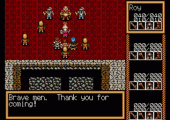
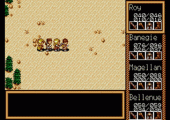
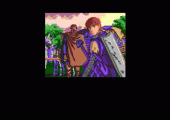
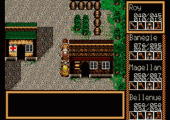
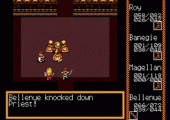
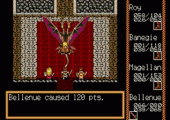
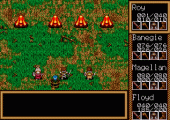
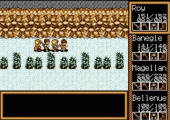
Recent Comments